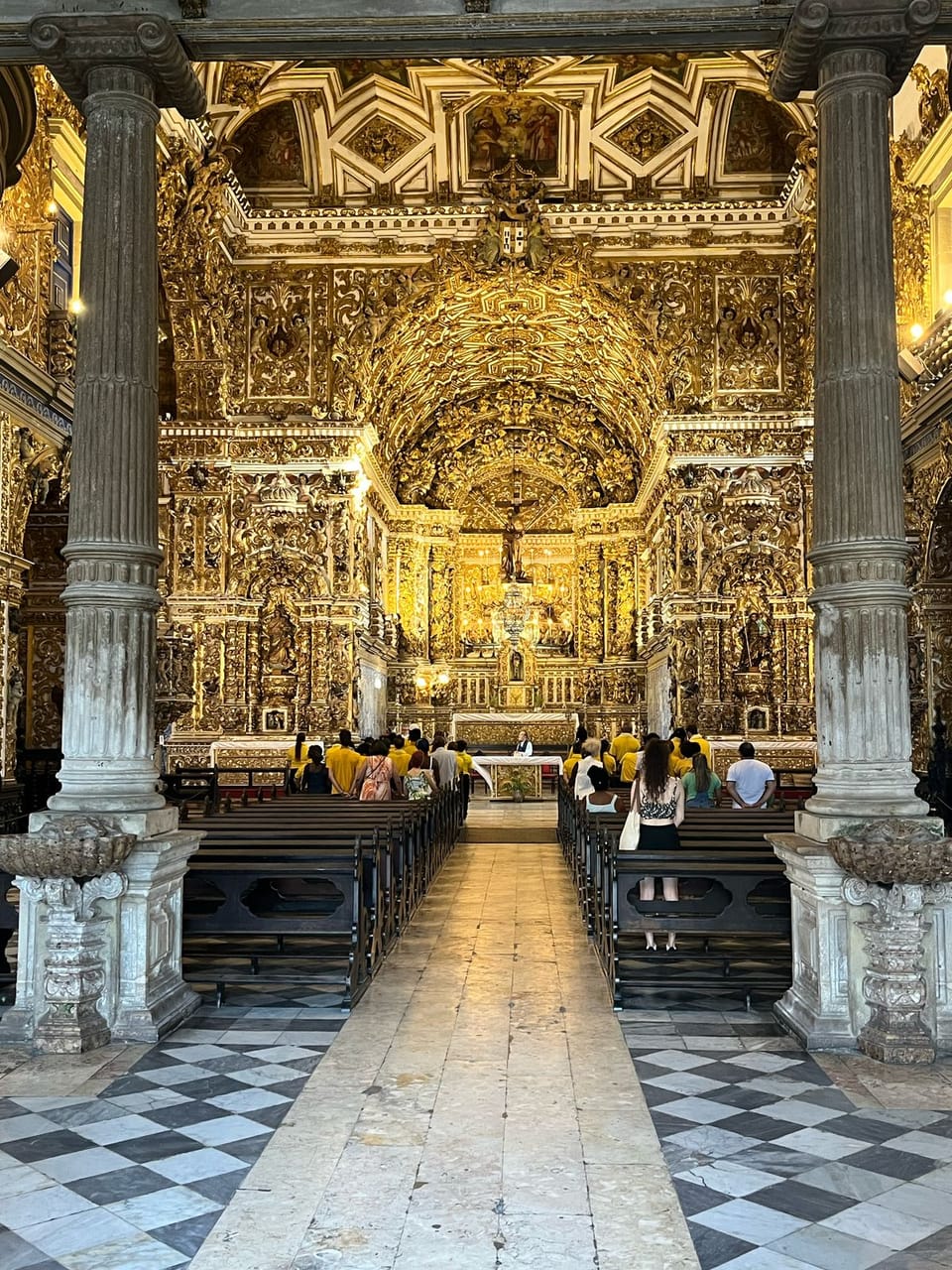We live in spasms. This statement could be made, it is almost certain, by any professional who works in the field of cultural heritage preservation in Brazil.
After January 8, 2023, February 5, 2025 may be a new golden opportunity to highlight the heritage agenda and finally reposition it in the country. Is?!
Other catastrophic events, for example, could also be listed here: that of September 2 (2018), when the National Museum of Rio de Janeiro suffered the tragedy of the fire in its facilities, destroying almost the entire historical and scientific collection there, of about 20 million items. And who remembers the case of the Matriz do Rosário, in Pirenópolis, Goiás, of the fire of September 5 (2002)? Two cases, just to emphasize this sad reality that we live in the country.
These tragedies, by themselves, should already lead us to reflect on our understanding of country and nation, from the perspective of the most different perspectives, about the governance that exists in this field of public policy action in Brazil, from the economy to culture, through the sectoral policies that are transversal to this field, the legal framework that supports it and, naturally, because of the understanding we have of ourselves, Brazilians, as individuals and as groups that make up Brazilian society.
By considering these mentioned facts, we can put together here some parallels of what we see in Brazil with regard to the governance of cultural heritage.
Let's start with the January 8 (2023), when there was a failed coup d'état attempt in Brazil, with attacks on the headquarters of the Three Powers in Brasilia, when the Planalto Palace, the National Congress and the Federal Supreme Court were invaded and vandalized in acts widely condemned, nationally and internationally. On that day, we watched on TV the attempts to destroy both the buildings and assets that are part of the collection of these institutional buildings of the Republic that are part of the listed complex of Brasilia, recognized as a World Heritage Site by UNESCO in 1987, the last two being individually listed at the federal level.
Subtracting here many other accidents, little reported, that may have occurred in this interregnum, we arrive at the February 5 (2025), when the ceiling lining of the Church of São Francisco de Assis, one of the most important examples of Brazilian Baroque, known as the "Golden Church", well listed at the federal level that is part of the Historic Center of Salvador, a site declared by UNESCO in 1985 as a World Heritage Site, collapsed. The incident resulted in the death of one person and injured five others who were visiting the monument.
These occurrences, which we could classify as claims, are events or occurrences that cause losses, damages or losses. In the case of material cultural heritage, which refers to buildings of special historical interest, these occurrences may occur, among others, due to natural disasters, acts of vandalism, negligence and abandonment, and harmful processes of urban development and modernization, with consequences, in certain cases, irreparable.
But what can be extracted from the events on screen? The issue of cultural heritage is a very complex subject and could be analyzed from different angles. Given the existing legal and managerial framework in Brazil, and examples like these, why do these claims continue to occur in the country?
It would be necessary to address the issue considering at least four fundamental points:
1- The meaning of recognition : for what, for whom and why are assets of cultural interest recognized?
2- The immediate consequences of recognition : what is the Accountability and Visibility of these recognized assets for society as a whole?
3- The consequences of recognition : what economic, social and cultural dynamism results and where do Tourism and Identity Enhancement enter into this equation?
4- The (de/re)current questioning of recognition : How are we and where are we going?
Succinctly, but without losing sight of the central focus of each issue pointed out, from the point of view of the meaning of recognition, the identification of cultural assets of Brazilian society and the valorization of these identified assets was consolidated in the country as a territorially fragmented and stratified process, based on the political-administrative instances of the Brazilian State. This is based on facts of relevance to local, regional, national or even international history. On the other hand, not all aspects of history, especially those involved in this trajectory, were properly considered. Thus, the absence of subjects and their places of speech in narratives recorded from the recognized material manifestations leave gaps for a more integral understanding of the country's civilizing process that allows us to understand who we are and why we are the way we are. That is why there is often no connection and resonance of groups that form Brazilian society with the collection of assets that were protected and declared Heritage in this trajectory of patrimonialization of cultural assets in the country. Thus, without further ado, we preserve what we know, love and identify ourselves as our cultural reference. Apart from that, it is pure desire of some. That is why it is important to continue identifying and recognizing cultural assets in the country. But this process needs to be revisited and restructured in order to resolve these pending issues, so to speak.
From the immediate consequences of this process of recognition as such, it is evident that, traditionally, by virtue of an imperative verticalized and descending vision where everything tends to operate from the highest to the lowest levels of the organizational structure of the Brazilian State and society, the decisions adopted or the actions carried out at the top affect or fail to affect, neglecting its other levels. Thus, either certain actors are focused on as those strictly responsible for ensuring and maintaining recognized cultural assets, as is what happens in Brazil in the case of the National Institute of Historical and Artistic Heritage, Iphan, or in a situation of claims that affect heritage cultural assets, the characterization of "hidden subjects" or, often, "indeterminate subjects", due to the lack of clarity about who is responsible for what when it comes to preserving cultural heritage in localities, in whatever sphere of recognition.
Thus, the processes of visibility necessary, at least as a result of this recognition, highlight the importance of the processes of communication and construction of dialogues between citizenship and heritage cultural assets, where the processes of education and community awareness are fundamental strategies for the consolidation of the connections mentioned above for the generation of synergies of belonging and appropriation by society as a whole of those assets that became part of the country's patrimonial collection. In this way, without subterfuge, those who are not seen are not remembered and to be remembered it is necessary to urge those who see them, which presupposes interpretation in languages that consider the various audiences that come to access the patrimonialized cultural assets. To this end, a matrix of responsibilities, identifying roles and commitments of each agent involved or to be involved, built consensually among all, constitutes an essential tool for the suppression of managerial dysfunctions on the protected cultural heritage.
Naturally, as a result of how each patrimonialized cultural asset is treated, the possible consequences of its recognition can have different results, which can range, for example, from its real estate appreciation or building depreciation, sometimes providing processes of gentrification – ennoblement of places – to the abandonment and functional emptying of areas that degrade – tugurization. Depending on this, this heritage collection becomes more or less strongly appropriated by tourism management, constituting adequately or not tourist products that may or may not generate benefits for the holders of this heritage and for the areas where they are located, transmitting or not an adequate and desirable message of this heritage as a tourist attraction. Thus, tourism as an economic and sociocultural activity enters this equation as a factor that can mobilize means to consortium ensure the preservation and consequently the enjoyment of this heritage by visitors, in addition to residents. Identity values, equally, enter into this equation, in a positive or negative way, when this message, at the time it is conveyed, expresses or not the legitimate values of the group(ies) that make up the society where this heritage is located. Thus, without a shadow of a doubt, as long as cultural heritage is understood as a liability of society, its understanding as an obstacle to development will prevent its adequate and sustainable appropriation, generating ineffective and conflicting processes of heritage preservation, in a permanent and insane dispute between agents in society for what measure to adopt in the face of preservation processes, renewal and growth of localities. Thus, inserting heritage in the guidelines of local development is essential to experience and appropriate it in its contemporaneity, without the usual need for its mere museification.
Finally, when we reflect on how we are and where we are going, it is at least necessary to recognize that the patrimony constituted as such is a sick patient who needs care and attention differentiated by the illness that affects him.
In a context in which there are several agents who act in the field of preservation of Brazilian cultural heritage, often uncoordinated, in a reality of scarcity of resources for the promotion of actions aimed at the preservation of this heritage, there is still a dispersion of efforts and application of resources in the country that have resulted, commonly, in little effectiveness in the actions undertaken. The little adoption of practices that promote greater inter-federative synchrony and greater participation in the relationship between the State and society further corroborates to aggravate this situation.
Admitting and attesting that the cultural heritage of Brazilian society is an asset for the promotion of its own development, based on self-esteem, self-determination and sustainability, this recurring situation constitutes the greatest challenge for the field of policy of preservation of Brazilian cultural heritage today.
Thus, for a sick patient, in the face of the complexity of the diagnosed disease, a "leap of reasoned faith" and courageous measures are demanded in search of sustainable governance. To this end, we believe that the Unified Health System (SUS) points out paths that could be adopted for the field of cultural heritage, to analogously inspire the implementation of the Unified Heritage System (SUP).
Thus, making an analogy between the principles of the Unified Health System (SUS) and the preservation of Cultural Heritage, we could explore what follows [1] :
1. Universality : Just as the SUS ensures that all citizens have the right to health, Cultural Heritage must be accessible to all people, ensuring that everyone can enjoy, know and value cultural heritage, regardless of social class, ethnicity or geographic location, in addition to other aspects that could still be considered.
2. Completeness : Cultural Heritage must be preserved in its entirety, considering all the aspects that define it, according to its value and historical, cultural, scientific, artistic and social importance, among others, which includes the conservation of monuments, the appreciation of traditions, cultural practices and popular knowledge, as well as the SUS takes care of health in a comprehensive way, covering prevention, treatment and rehabilitation.
3. Equity : The appreciation and preservation of Cultural Heritage must be done in an equitable way, that is, fair and impartial, recognizing and respecting the existing cultural diversity. It is necessary to ensure that all cultures and traditions are preserved and valued, promoting social and cultural justice in the name of the diversity and plurality existing in Brazilian society, just as the SUS seeks to meet the specific needs of each individual in a fair and adequate way.
4. Decentralization : The management of Cultural Heritage should be decentralized, with responsibilities shared between different levels of government and the local community. The participation of various spheres ensures a more effective and democratic management, similar to the decentralized management of the SUS.
5. Social participation : Society must be involved in the preservation of Cultural Heritage, actively participating in preservation decisions and actions. This strengthens the sense of belonging and collective responsibility, just as social participation is essential in the SUS for the formulation of health policies.
This analogy seeks to highlight, in a succinct way, the importance of inclusive, comprehensive and participatory principles that exist both in health and in the preservation of cultural heritage, capable of promoting the well-being of the population and the appreciation of our cultural references.
This exercise instigates to investigate and reflect on what would be necessary to make it a reality. Here is the record as a starting point and reference.

Photo: Brito, Marcelo (2024).
[1] Based on the current legal instruments that instituted and implemented the SUS – Unified Health System, which are: 1) Federal Constitution of 1988; 2) Organic Health Law (Law No. 8,080/1990); 3) Complementary law that provides for the participation of the community in the management of the SUS (Law No. 8,142/1990); 4) Decree regulating Law No. 8,080/1990, for the organization of the SUS, the planning of health policies, health care and interfederative articulation.



